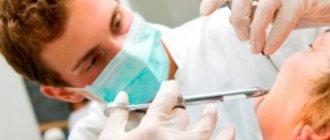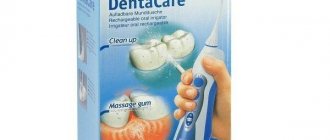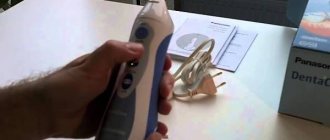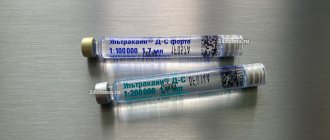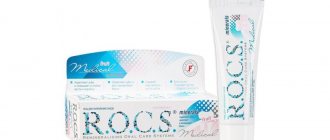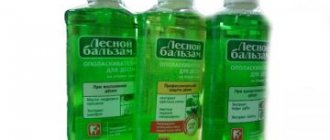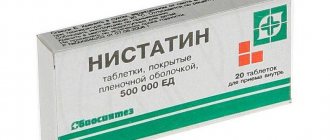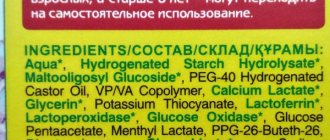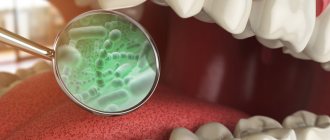Content:
- The use of antibiotics during tooth extraction for preventive purposes
- Antibiotics after tooth extraction with inflamed gums
- When you can't do without antibiotics
- Types of antibiotics used in dentistry
- What are the consequences of not taking antibiotics?
Only the dentist can decide whether to prescribe an antibacterial drug to a patient or not.
The need for its use does not always arise. If the operation was uncomplicated and the likelihood of complications is minimal, additional drug therapy is usually not required. Even if after tearing out a unit the body temperature has increased, this is not an indication for antibiotic therapy. The body adequately responds to the inflammatory process and does everything necessary to block the spread of pathogenic microflora. Normally, already on the 3-4th day the patient’s condition is completely normalized, the pain goes away, the swelling subsides.
Prohibitions on use
The main range of contraindications for dental therapy includes a number of conditions:
- spontaneous allergic reactions to a subgroup of penicillins and their analogues - the condition is an absolute prohibition, in which a more suitable remedy is selected;
- with insufficient functionality of the liver and kidneys or disturbances in their performance;
- in case of lymphocytic leukemia – neoplasms in the area of red bone marrow (lymphatic sprout);
- for certain types of viral lesions - infectious mononucleosis.
Any non-standard reactions of the body of allergic etiology when using a medicinal product are the basis for a ban on use.
Antibiotics after tooth extraction with inflamed gums
A few days after the extraction, the patient visits the dentist who performs the operation. The doctor assesses the course of regenerative processes. If it turns out that the inflammatory process has spread and there is a high probability of a bacterial infection, then antibiotics are immediately prescribed. They create conditions for the speedy restoration of damaged mucous membranes.
The most common reasons why antibiotic therapy is necessary after removal of radical units:
- non-compliance with medical prescriptions, due to which the hole became inflamed;
- too active rinsing of the mouth, which caused the displacement of the protective blood clot;
- slow healing associated with the individual characteristics of the human body.
After studying the specifics of the situation, the doctor decides which medications to prescribe. In some cases, it is possible to get by with local application of antibacterial gels and ointments. For severe inflammation, oral medications are prescribed.
Possible interaction
Simultaneous use of Amoxiclav with other bactericidal antibiotics increases the effectiveness of the main drug.
A decrease in the desired result is observed when using an antibiotic with certain medications:
- macrolides;
- tetracyclines;
- sulfonamides.
Sharing the medicine with hormonal contraceptives weakens the functionality of the latter.
When using the drug and alcoholic (low-alcohol) drinks, a decrease in the effectiveness of the drug and a possible negative effect on the liver are observed.
Combined treatment with anticoagulants can increase prothrombin time - if necessary, extreme caution should be used.
When you can't do without antibiotics
If after extraction a secondary inflammatory process has developed, affecting the trigeminal nerve, alveolar ridge, periosteum, there is nowhere without antibiotic therapy. It is also carried out if:
- the operation was complex (for example, the “eight” was pulled out);
- a large amount of purulent exudate is released from the hole;
- alveolitis has developed, body temperature is elevated, the wound is infected;
- periodontitis was diagnosed, spreading to the tissues that are located next to the extracted tooth;
- osteomyelitis was identified, which contributes to the formation of fistulas;
- periostitis progresses, has spread to the periosteum;
- After the operation, flux developed at the removal site, and the face became very swollen.
It is very important that in case of any complications the patient visits the dental clinic and does not self-medicate, experimenting with different pharmaceutical drugs and folk recipes.
Negative reactions
When using the medicine, the body may experience adverse reactions:
Hematopoiesis department:
- anemic conditions;
- eosinophilia – increased number of eosinophils in laboratory parameters;
- thrombocytopenia – decreased platelet count;
- agranulocytosis – decrease in leukocyte counts;
- leukopenia - a decrease in leukocytes in the blood count.
Digestive department:
- increased gas formation;
- gastroduodenitis;
- dyspeptic disorders – diarrhea;
- nausea leading to vomiting;
- glossitis - inflammation of the tissues of the tongue;
- stomatitis;
- anorexia;
- enterocolitis is a simultaneous inflammatory process in the small and large intestines.
Nervous system:
- unreasonable anxiety;
- non-standard behavior;
- increased arousal;
- convulsive conditions;
- impaired clarity of consciousness;
- hyperactivity;
- periodic dizziness;
- sudden attacks of headache.
Skin:
- swelling;
- rashes on the dermis;
- hives;
- exfoliative dermatitis;
- epidermal necrolysis of toxic origin;
- erythema multiforme;
- acute toxic-allergic lesions - Stevens-Johnson syndrome.
Urinary department:
- hematuria;
- interstitial nephritis.
In some cases, superinfection may occur, including candidiasis. Negative reactions of the body due to the use of the drug are mild and temporary.
Types of antibiotics used in dentistry
To eliminate the symptoms and consequences of dental diseases, antibiotics of the following pharmacological groups can be used:
- Penicillins. The largest category of antibacterial agents. They are characterized by a wide spectrum of action and effectively destroy pathogenic microorganisms. They can be injected or used in tablet form.
- Macrolides. Remedies that are often used for diseases of the ENT organs. Dentists prescribe them only if the patient has poor tolerance to other antibacterial drugs or the pathogen is insensitive to penicillins.
- Cephalosporins. Medicines exhibiting excellent bactericidal properties. In dental practice, two representatives of the group are most often used - Cefaclor and Cephalexin.
- Lincosamides. Medicines that effectively control the inflammatory process. With their help, you can quickly eliminate inflammation and prevent further progression of dental complications. A popular representative of lincosamides is Lincomycin. It can be bought in the form of tablets, injections, ointments. The latter is suitable for tamponade of the inflamed socket.
- Fluoroquinols. Contains tsifran - a component that quickly destroys pathogenic flora. Indicated for purulent complications.
- Aminoglycosides. They are prescribed after extensive dental operations, if the wound is infected or the infection has entered the blood.
- Tetracyclines. They act by blocking protein synthesis in microbial cells. These include Oletetrin, Doxycycline. It should be noted that today tetracyclines are used less and less, since many modern infections are little sensitive to their active substance.
Features of use
The use of medication for dental therapy is carried out after the appointment of the attending physician. The patient must read the instructions provided, paying attention to the following special instructions:
- Before first use, you must make sure that there are no allergic reactions to the components included in the drug. It is advisable to conduct a preliminary allergy test.
- The product is used in the formation of a bacterial type of infectious process caused by pathogenic microflora that is sensitive to the active ingredient. Amoxiclav has no effect on viral infections. Before therapy, it is necessary to carry out bacteriological culture to determine the type of pathogen and its resistance to the drug.
- If there is a lack of the required effectiveness of the drug within two days, then the drug is replaced with a similar substance or a change in treatment tactics is necessary.
- The medication is prescribed with extreme caution to persons with impaired renal or liver function, and at the same time, constant monitoring of their performance is carried out.
All recommended features must be taken into account when drawing up the necessary therapy regimen.
What are the consequences of not taking antibiotics?
If a doctor has prescribed a medicine, but the patient does not want to take it because of some personal beliefs, the situation often turns against him. It may turn out that the doctor’s worst fears will come true - the inflammatory process will spread to the jaw bone. Then osteomyelitis will develop.
This purulent disease is quite insidious. It can affect internal organs and cause sepsis, which, in turn, can be fatal. Therefore, you should not argue with the dental surgeon and ignore his appointments. Take care of your health.
Overdose
Accidental or intentional excess of the recommended volumes of the drug cannot cause death or serious life-threatening side effects.
The main symptomatic manifestations of overdose are:
- changes in water and electrolyte balance indicators;
- disturbances in the functioning of the gastrointestinal tract - pain in the epigastric region, diarrhea and vomiting;
- development of crystalluria with a gradual transition to insufficient renal functionality;
- convulsive phenomena suggest the use of a pharmacological agent in increased dosages or in cases of impaired renal function.
An overdose requires contacting a medical facility for symptomatic drug therapy. If the drug was used less than four hours ago, the patient is prescribed gastric lavage and activated charcoal. In more serious cases, cleansing the body is carried out by hemodialysis.
Exogenous alveolitis
A persistent febrile condition is characteristic; throughout the entire disease there is pronounced pallor of the skin. The patient's quality of life deteriorates significantly - he cannot eat properly, because it becomes very difficult to eat.
Lymphangitis and lymphadenitis are characteristic signs of exogenous alveolitis, because the infection quickly spreads to nearby areas. Upon visual examination, a gray coating and severe hyperemia are noted, and upon palpation the patient notes sharp pain.
Causes
There are several reasons why a dental cyst develops. The main reason is the activity of pathogenic microorganisms in a closed dental space; the following risk factors contribute to this:
- severe pathology, lack of timely treatment and incorrect treatment of dental diseases - caries, periodontitis, pulpitis;
- infectious complications after tooth filling, implantation procedures - in such cases, the doctor removes not only the cyst, but also the crown or implant, this avoids relapse;
- complications during teething, especially when wisdom teeth erupt - dental tissues injure the gums, bacteria get into microcracks,
- microorganisms also enter wounds that form due to mechanical damage to teeth;
- Nasopharyngeal diseases – infections in the nose and throat can spread to the oral cavity.
To provide adequate treatment, it is necessary to accurately determine the cause of the development of a dental cyst; based on it, the dentist will prescribe suitable therapy. So, in cases of injury, treatment consists of removing the cyst and tissue regeneration, but if the cyst is a complication of another disease, then in addition to removing the vesicle, the patient will be prescribed treatment for the underlying disease.

